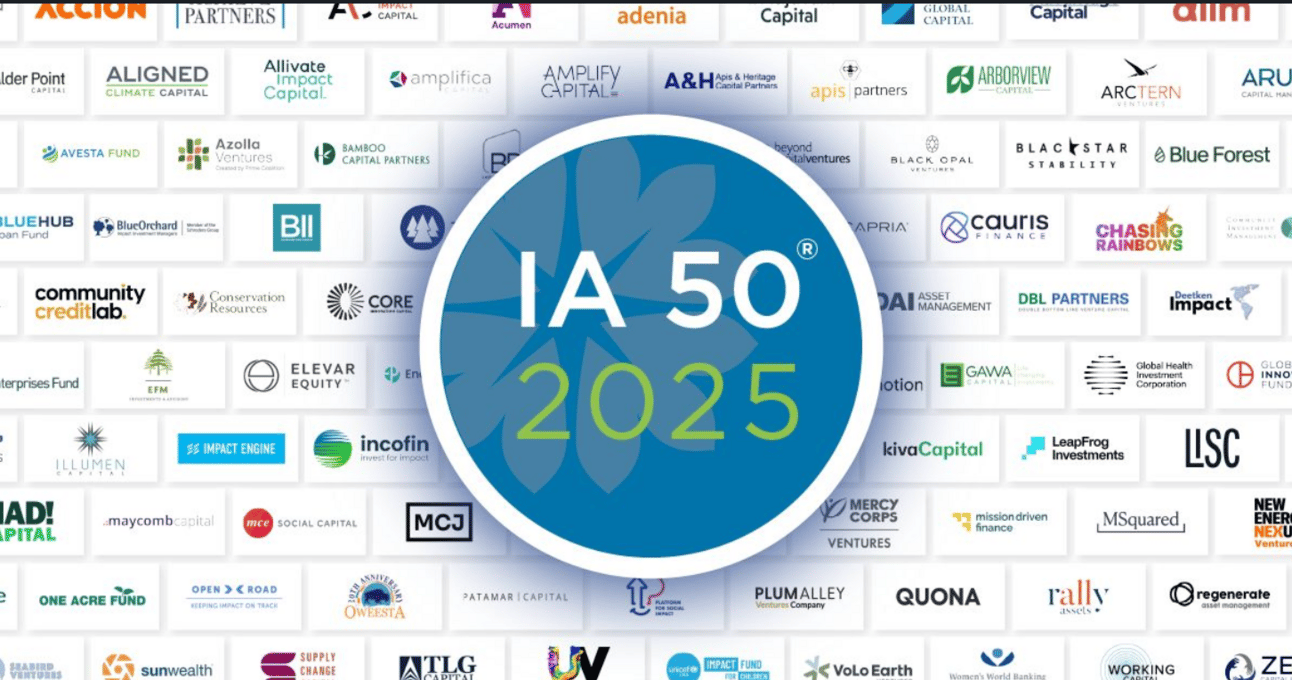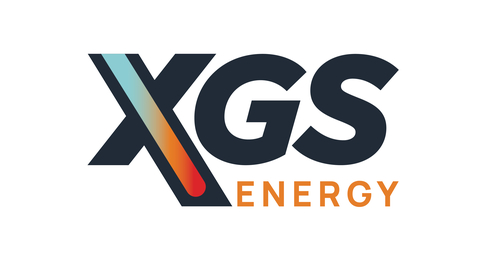VOLO EARTH IN THE NEWS
ANNOUNCING PEARL STREET
Hello VoLo Earth Community!
This month, we announced the acquisition of Pearl Street Technologies by Enverus - a transformational milestone for Pearl Street, our portfolio, and the power grid at large. Today, we will explore the problem Pearl Street is solving, its unique approach, our history with the Company and what’s next.
The U.S. power grid is facing a crisis of capacity and efficiency, strained by a staggering interconnection backlog and aging infrastructure. As of 2023, roughly 2.4–2.6 terawatts of proposed generation and storage capacity were waiting in interconnection queues across the nation - for context, this is more than double the U.S. grid's capacity (enverus.com). In 2023, the median wait time for interconnection applications was 5 years.
Grid operators and developers have long relied on manual and time-consuming consultant-driven processes to evaluate the viability of connecting new projects to the grid, defined by extensive manual interconnection studies with a limited ability to do scenario planning. After months of work to manually assess a potential interconnection, results are often stale or completely unusable due to changing grid variables. New factors introduced by renewables, such as intermittency, only steepen delays.
Beyond interconnection delays, the grid itself is aging; 70% of U.S. transmission lines over 25 years old (US Senate). A significant portion of the U.S. electric grid was built in the 1960s and 1970s, while some operating transmission lines are over a century old. This aging infrastructure increases operational and maintenance costs while limiting the grid’s ability to integrate new energy sources efficiently. At the same time, grid operators lack the tools to modernize their processes, whether in expanding transmission capacity, managing grid congestion, or streamlining interconnection studies.
These systemic challenges elevate risk at every stage of a renewable energy project’s lifecycle. Developers face early-stage uncertainty in interconnection and permitting, mid-stage capital constraints, and long-term operational challenges tied to evolving grid dynamics. The rise of battery storage and demand-response technologies has further increased grid complexity, requiring more sophisticated risk assessment tools for developers and investors. Together, delays create uncertainty and generate higher costs for developers (many projects withdraw after years of waiting, wasting efforts) - forming a bottleneck that prevents energy transition demand and supply from meeting efficiently in the market.
VoLo Earth’s History with Pearl Street
VoLo Earth’s history with Pearl Street can date back to Kareem Master’s degree in Renewable Energy Engineering and Grid Integration in 2014, where he uncovered the need to apply automation to grid interconnection. It was only a matter of time before transmission-level interconnection in the US would become a huge bottleneck. Kareem and David Bromberg, Pearl Street founder, even had early discussions around the grid interconnection problem in 2015 living in Palo Alto, both building Aurora Solar.
Fast forward to 2021 and David, Kareem, and their Co-Founders had launched Pearl Street. As Kareem brought the Company to the rest of the team, it became a very clear investment choice; VoLo Earth’s investment strategy favors technologies which bring a true step change in unit economics, solutions that unlock critical industry bottlenecks, and capital light service models. Pearl Street exemplifies each of these qualities.
VoLo Earth leading the seed round and Kareem joining the board was a natural progression, and Pearl Street’s amazing technology was quickly demonstrating real value in opening up the interconnection bottleneck. If you remember our September newsletter, Kareem even had the honor of officiating David’s wedding.
How Pearl Street is ‘Undoing the Queue’
Pearl Street brings automation to grid planning which allows grid planners to evaluate network impacts of new projects in days rather than months. To date, the Company has processed over 300 GW of generation in interconnection queues (with 100+ GW more in the pipeline) for its utility clients SPP and MISO.
Pearl Street spun out of Carnegie Melon with a software engine called SUGAR™ (Suite of Unified Grid Analyses with Renewables), which utilizes innovative circuit simulation techniques to model power grids with far greater speed and stability than traditional tools.
The Company’s flagship product focuses on automating interconnection studies. When Pearl Street first brought this product to SPP (manager of the electric grid and wholesale power market for the central United States), a dramatic collapse of timelines occurred immediately: what once took months of manual engineering was achievable in a single day. This success led to a surge of utility and investor interest. Soon, Pearl Street signed another large ISO (Independent System Operators) agreement with MISO, one of the world’s largest grid and real time energy market operators.
The impacts of Pearl Street on these businesses are massive; SUGAR can reduce certain engineering analysis times by up to 200× compared to standard load flow programs or manual calculations. In terms of modeling factors like intermittency, SUGAR is designed to rapidly solve (or converge) nonlinear power flow equations and optimization problems that previously took brute-force effort. For instance, engineers can ask “What if we add 5 GW of wind in West Texas and 3 GW of storage in Chicago and a hurricane knocks out two transmission lines?”
Pearl Street also launched a developer-facing product called Interconnect, which allows developers to use ISO-level cluster study data to assess project interconnection risk. This saves developers significant time and money.
The platform can even move beyond modeling projects in the queue to even discovering grid connection solutions that conventional methods miss, potentially avoiding unnecessary infrastructure upgrades.
Building new transmission is slow, expensive, and very challenging (think property and rights of way that need to be obtained). Optimizing existing infrastructure, and allowing for interconnection of new clean energy generators, solves both energy supply and grid utilization problems at once. It allows for faster adoption of clean energy, storage, and new demand like highway fast chargers for EVs and data centers for AI.
Looking Forward
Pearl Street has become a national leader in grid modernization - the strategic acquisition by Enverus will only cement and accelerate this role.
This national leadership was recently recognized by FERC, the Federal Energy Regulatory Commission, which recently opined on interconnection automation to ISOs and RTOs (that’s Independent System Operators and Regional Transmission Operators in grid speak) with this letter from Commissioner Rosner. In the 3rd paragraph, he specifically highlights the results of Pearl Street and MISO’s implementation of SUGAR, stating that “One application reproduced the manual study of a large interconnection cluster - which took nearly two years to complete - in just 10 days and arrived at largely similar results.”
Meanwhile, as interconnection challenges mount, data and analytics are becoming essential to navigating grid constraints and energy market dynamics. Enverus, a leading provider of energy data and insights, helps stakeholders - including developers, investors, and utilities - understand market trends, congestion risks, and the financial viability of projects. By leveraging Enverus' intelligence alongside automation tools like Pearl Street, the industry can make smarter, faster decisions in an increasingly complex grid environment.
Pearl Street is at the forefront of the nation’s energy future, unlocking and orchestrating the terawatts of renewable energy projects needed to power the country. Already, the Company’s impact illuminates how software can drive systemic change - reducing uncertainty, expanding grid capacity, and cutting years off interconnection timelines to turn theoretical transition pathways into tangible reality.
We are humbled to have had the opportunity to provide Pearl Street with the catalytic capital and critical early mentorship to help the Company arrive at this milestone. With 300+ GW processed to date, the impact is already significant. This will only expand as Pearl Street gains access to Enverus’ resources and expands its partnerships with some of the country’s largest ISO. We will remain proud to witness Pearl Street transform the national grid and accelerate the energy transition.
VOLO EARTH COMMUNITY
“VoLo Earth continues to emerge as a story of outperformance and leadership in the energy transition”
-IA50
A huge thank you for this recognition to Impact Assets 50, a premier organization in our field.

And another thank you to ICM for including our team in the annual Spring convening this month in Washington DC. It was a fantastic opportunity to spend a day deep diving into the trends, dynamics and macro factors shaping the industry - and to visit in person with some of our peer investors and partners.



PORTFOLIO
Complementing the Pearl Street (Fund I) news this month, three of our five Fund II investments grabbed national headlines in March:

24/7, Closed-loop Geothermal
XGS’ closes an oversubscribed $13M round to accelerate deployment of its advanced geothermal technology! in an oversubscribed round!
The financing follows the successful 2024 field test of its Thermal Reach Enhancement (TRE) technology and the launch of its first commercial-scale well in California. The funding will drive execution of XGS’ multi-gigawatt pipeline, and also brings VoLo Earth partners WovenEarth, as well as Aligned Climate Capital and ClearSky into the syndicate.
Industry leaders are taking note - Mano Nazar, former Chief Nuclear Officer at NextEra, joins Joe on the XGS Board, calling it “the fastest path to abundant baseload energy.” CleanTechnica highlights XGS pre-qualification to compete for contracts in any branch of the Defense Department, detailing XGS solutions specifically of the 11 qualified companies nationwide.
Meanwhile, Axios Pro hints at what’s next: a $60M-$100M growth round on the horizon.

Circular Wood Supply Chain
CNBC features Cambium Carbon! The CNBC feature follows recent highlights in both Time and TechCrunch of Fund II’s most recent investment and iterates how Cambium is the first player solving the problem on a national-scale and at a structural level.
MaC VC reiterates the conviction and excitement we outlined in our February newsletter - “For us, as a venture capitalist who is looking to invest in businesses that kind of can go to the moon and become billion dollar businesses, this meets all the criteria.”

Metals Without Mining
The Wall Street Journal posits Magrathea as a prime example of a dual-use technology at the intersection of decarbonization and national security.
“Getting the West’s magnesium supply base off of China - that is the problem we’re solving,” said CEO Alex Grant.
As Grant noted, while automakers aim to cut emissions, their immediate priority is securing supply chains. This is a prime example of how decarbonization scales fastest when aligned with economic and geopolitical imperatives (when decarbonization is the byproduct of a better product, process or system).
READING
@VoLoEarth: In a piece close to hearts in the Aspen Snowmass area, an unlikely demonstration of the energy transition emerges. For those who are not familiar, the Winter X Games have been hosted in Aspen, CO for the past 24 years. In the early years, daredevils on gas powered motorcycles with metal spikes on their tires would launch themselves 50 feet into the air off jumps sculpted from ice, performing mid air acrobatics then trying to land safely on the other side. They were not always successful. Being a winter sports festival, gas powered snowmobile athletes progressed their sport to the point where they replaced the motorcyclists and would execute similar tricks, including backflips of the same ice jumps. Over the years, these freestyle “slednecks” continued to push the limits of what was possible. While the sport has always been progressed by the athleticism and fearlessness of the athletes involved, the energy transition is now progressing the sport of freestyle snowmobiling.
This is great example of how the persistent undercurrent of the energy transition is not necessarily about saving the planet but rather a story of better products, better value, and cheaper price points. The energy transition continues to open the minds of global corporations, and freestyle athletes alike to the economic and power efficiency gains provided by new innovative technologies, designs and the business models that accompany them.
@VoLoEarth: Heat pumps offer a compelling opportunity to reduce carbon emissions while generating substantial energy savings for homeowners and lowering overall lifetime costs.
However, widespread adoption remains challenging, as demonstrated in California. Key barriers include a shortage of trained contractors and installation professionals, as well as limited consumer awareness. We commend California’s leadership in addressing these issues through a comprehensive strategy that includes low-interest loans to minimize upfront costs and incentives to expand the contractor workforce. We look forward to seeing how the state's newly introduced "Heat Pump Week" will contribute to advancing these efforts.
@VoLoEarth: Historically, energy security and economic growth have been tied to oil, but that’s changing. As the article highlights, “In coming years, energy security will mean electricity.” Dominion Energy provides a case study in this shift, planning to double its generation capacity over the next 15 years - largely to power Northern Virginia’s booming “Data Center Alley.” In 2015, Dominion had no solar facilities; today, it has 58, with solar expected to make up nearly half of all new planned generation.
The article also highlights that beyond utilities, the rise of what the article calls the ‘electric economy’ demands massive investment across the value chain - real estate, infrastructure, and equipment are three example sub-sectors. As electricity replaces oil as the backbone of economic growth, risks evolve. We see the biggest opportunities in solving these bottlenecks and effectively pricing changing risk as the market evolves.
@VoLoEarth: Geothermal energy is poised for a breakthrough in the U.S., as highlighted in a recent Engineering News-Record article. Encouragingly, the slogan “Drill Baby Drill” may soon apply not only to oil and gas but to geothermal expansion as well. U.S. Energy Secretary Chris Wright emphasized that a mature geothermal industry could “better energize our country … enable AI, manufacturing and reshoring, and stop the rise of our electricity prices.”
Geothermal is also among the Trump administration’s “energy dominance” priority list. At VoLo Earth, we share the optimism of Brian George, Google’s energy market policy lead, who noted that geothermal offers the potential for “24/7 power to meet 24/7 demand.” As noted above, we are particularly excited about our investment in XGS Energy, which we believe represents a credible path to delivering firm, baseload power at market-competitive prices. As the energy transition accelerates, geothermal’s scalability and reliability make it a compelling part of the U.S. energy future.
@VoLoEarth: And finally, as a quick complement to Magrathea’s WSJ focus, the White House just released an executive order using Defense Production Act and other authorities to “facilitate domestic mineral production to the maximum extent possible.” This EO applies to magnesium.
Here is a recap of our take on the evolving metals and mining landscape for any interested.